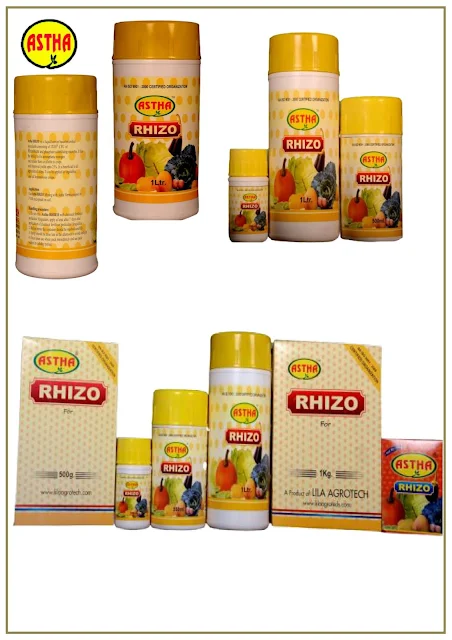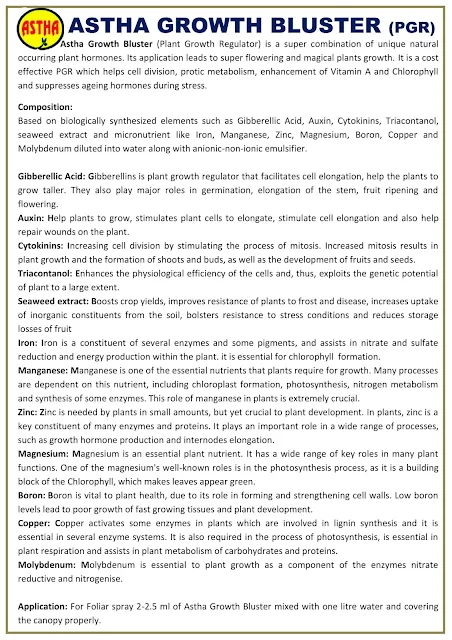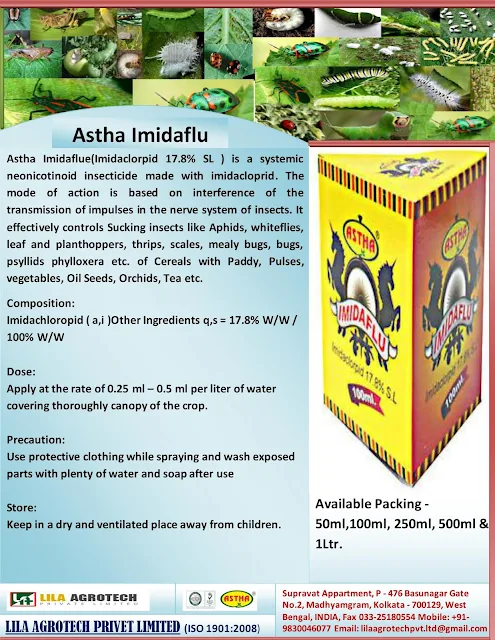Tuesday, April 12, 2022
Friday, March 25, 2022
Saturday, September 4, 2021
Friday, November 23, 2018
BIO-FERTILIZER (OVERVIEW, EFFECT ON TEA, APPLICATION PROCESS, PRODUCTS & DOSES)
1. Introduction
: Chemical Fertilizer is the main source of nutrients of the Tea
Plants for better yield indeed. But our ecological system does not permit any plants
to intake nutrients directly from chemical fertilizers. All Plant needs
nutrients in their solubilised from which is being done by few microbes in
field always. That has been identified
by our modern agriculture science and suggested for Integrated Nutrient Management
(INM) instead of Chemical farming alone. As the excessive use of chemical
fertilizers in agriculture not only resulting
the reducing productivity of Soil but also it has resulted in several environmental problems
like ozone layer depletion, poor soil health, due to the decline in natural
microflora and acidification of water.
To
overcome these problems application of biofertilizers has been found effective.
Generally the biofertilizers are beneficial microorganisms involve in breakdown
of organic matter, Nitrogen fixation, and secretion of growth promoting
substances. They also supply nutrients to the plants, control soil borne
diseases and maintain the soil structure in cultivable fields. Intensive
research has been done to find out the usefulness of this aspect in the tea
plantations.
2. Effect on Tea: Certain
group of bacteria and fungi are considered as bio-fertilizers in tea and they
are freely available in top soil and usually associate with plants having
symbiotic relationship. These organisms receive nutrients from the plant tissue
and in turn supply the required nitrogen and phosphorus to plants. The
following group of bacteria and fungi are major bio-fertilizers available in
tea soil.
Nitrogen
fixing bacteria (N2) Although N2 is abundant (around 80%)
the atmospheric N2 is not readily available for plant uptake and
some bacteria are capable of N2 fixation from the atmospheric N2
pool. Many free living N2 fixing bacteria occur in soil. Some have
adapted to form symbiotic association with plants. The amount of N2
fixed by these organisms is considerable because of the close proximity they
have with their host plant. Efficient plant use of field N2
minimizes volatilization, leaching and denitrification. The major types of
nitrogen fixing bacteria are Rhizobium, Azospirillum and Frankia.
For
tea productivity Azosprillum is the
most efficient for increasing the nutrient enhancement in the seedlings. The
genus Azospirillum is an effective
root colonizer and its use is not limited by host specificity. Azospirillum is free living in soils so
that it can be cultured and produced in artificial medium. When adding Azospirillum to your soil, it work on
the root zones of your plants, then the Azospirillum bacteria reproduce and
multiply on the root hairs and create little swollen bumps called root nodules.
It is inside these nodules these little bacteria fixes the atmospheric nitrogen
and makes it available to a plant which is very beneficial to the plant’s
health. The commercially available Azospirillum also can be used at the rate of
5g/ seedling, however it depends on the
required population of infective propagules and strains which have positive
response to the host. Azospirillum stimulates the density and
length of root hairs, increases the growth through hormonal production,
increases biomass, increases survival rate and fixes nitrogen.
Phosphate solubilizing Bacteria
(PSB) for tea PSB plays a major role in the solubilization
and uptake of native and applied soil. Phosphate is essential for early
establishment and better growth of plants. Most of the Indian soils are
deficient in P and its requirement is met by the addition of phosphate
fertilizers in the form of aluminium or iron phosphate. But these fertilizers
are becoming expensive and may have adverse effect on tea. Hence, the phosphate
solubilizing bacteria have to be used as they play an important role in the
utilization of unavailable native phosphate by bringing about changes in soil
producing chelating agents and organic acids. Generally Bacillus, Pseudomonas,
Flavobacterium and Streptomyces are involved in P solubilization. This bacteria
have to be isolated from the soil and cultured under laboratory conditions with
a suitable medium. However, the commercially available PSB also can be used at
the rate of 5g/seedling.
Potash mobilizing bacteria (KMB) regulates
the permeability of the cellular membrane. It activates number of enzymes, like
alcohol dehydrogenise and its deficiency decreases photosynthesis. KMB plays a
vital role in the formation of amino acids and proteins from ammonium ions,
which are absorbed by roots and soils. Potash
mobilizing bacteria increases the resistance of tea plants to hot and dry
conditions and insects, pest & diseases.
Application:
Ø
Application of all Bio fertilizers must be in soil either
broadcasting or spraying.
Ø
Bio-Fertilizers works well if the
soil contains organic matters. So use Vermi Compost or FYM along with
Bio-Fertilizer.
Ø
It is always provide better result
if Bio-fertilizer be mixed with Vermi Compost / FYM and kept under shade for
2-3 days before application to soil as this increases the quantity of microbes
double in every 12 hours.
Ø
Broadcasting or Spraying preferably
be done late in the afternoon to avoid sunlight.
Ø
Separate Container should be used
for Bio-Fertilizers and before spray the container should be washed carefully.
Ø
Once open use whole pack
immediately and use pack within its validity period.
Ø
Do not mix any Bio-Fertilizer with
chemical fertilizer/pesticides and fungisides.
Ø
Apply Bio-Fertilizer at least 7
days before or after application of chemical fertilizer/pesticides/fungicides.
4. PRODUCTS:
|
Astha Azospi
|
|
Astha Azospi is neutral carrier based microbial inoculants consisting of 1 x
107 of Azosprillum Sp.
|
Composition:
1x 107 cells of Azospirillum Sp./gm Of carrier and activated charcoal ( May Contain Moisture up to 40 % ) for powder form.
1x 107 cells of Azospirillum Sp./gm Of carrier and activated charcoal ( May Contain Moisture up to 40 % ) for powder form.
1x 107 cells of Azospirillum
Sp./ml Of carrier and liquid carrier for liquid from.
Dosage:
|
Method of use
|
Doses
|
|
For Nursery
|
Mix 250gms / 250ml of Astha Azospi with 50
Kgs of vermi Compost/Organic Manure. Keep the mixture under shade for 2-3
days and broadcast the mixture to nursery thereafter.
|
|
Soil Applicaion
|
Mix 2.5kg./2.5Ltr of Astha Azospi with 100
Kgs of vermi Compost/Organic Manure and broadcast to 1 Acre of area.
|
|
Spraying
|
Mix 5 ml. of Astha Azospi with 1 liter of
water and spray the same on evening.
|
Available
Packing: Dust – 100 gm,
500 gm, 1 Kg. , Liquid – 100 ml. , 500 ml. , 1 Ltr.
|
Astha Azo
|
|
Astha Azo
is neutral carrier based microbial inoculants consisting of 1 x 107
of Azotobactor Sp.
|
Composition:
1x 107 cells of Azotobactor Sp./gm Of carrier and activated charcoal ( May Contain Moisture up to 40 % ) for powder form.
1x 107 cells of Azotobactor Sp./gm Of carrier and activated charcoal ( May Contain Moisture up to 40 % ) for powder form.
1x 107 cells of Azotobactor
Sp./ml Of carrier and liquid carrier for liquid from.
Dosage:
|
Method of use
|
Doses
|
|
For Nursery
|
Mix 250gms / 250ml of Astha Azo with 50 Kgs
of vermi Compost/Organic Manure. Keep the mixture under shade for 2-3 days
and broadcast the mixture to nursery thereafter.
|
|
Soil Applicaion
|
Mix 2.5kg./2.5Ltr of Astha Azo with 100 Kgs
of vermi Compost/Organic Manure and broadcast to 1 Acre of area.
|
|
Spraying
|
Mix 5 ml. of Astha Azo with 1 liter of
water and spray the same on evening.
|
Available
Packing: Dust – 100 gm,
500 gm, 1 Kg. , Liquid – 100 ml. , 500 ml. , 1 Ltr.
|
Astha PSB
|
|
Astha PSB is a netural carrier based microbial inculants consisting of 1×107 of
phosphate solubilising microbes.
|
Composition:
1x 107 cells of Phosphate Solubilizing Bacteria/gm Of carrier and activated charcoal ( May Contain Moisture up to 40 % ) for powder form.
1x 107 cells of Phosphate Solubilizing Bacteria/gm Of carrier and activated charcoal ( May Contain Moisture up to 40 % ) for powder form.
1x 107 cells of Phosphate
Solubilizing Bacteria/ml Of carrier and liquid carrier for liquid from.
Dosage:
|
Method of use
|
Doses
|
|
For Nursery
|
Mix 250gms / 250ml of Astha PSB with 50 Kgs
of vermi Compost/Organic Manure. Keep the mixture under shade for 2-3 days
and broadcast the mixture to nursery thereafter.
|
|
Soil Applicaion
|
Mix 2.5kg./2.5Ltr of Astha PSB with 100 Kgs
of vermi Compost/Organic Manure and broadcast to 1 Acre of area.
|
|
Spraying
|
Mix 5 ml. of Astha PSB with 1 litter of
water and spray the same on evening.
|
Available
Packing: Dust – 100 gm,
500 gm, 1 Kg. , Liquid – 100 ml. , 500 ml. , 1 Ltr.
|
Astha AZO- PSB
|
|
Astha AZO-PSB is a natural carrier based microbial inoculants consisting of
Azotobacter sp, Azospirrillum Sp. & Phosphate Solubilising Bacteria.
|
Composition:
1x 107 cells of Azotobactor Sp., Azosprillum Sp and Phosphate Solubilizing Bacteria/gm Of carrier and activated charcoal ( May Contain Moisture up to 40 % ) for powder form.
1x 107 cells of Azotobactor Sp., Azosprillum Sp and Phosphate Solubilizing Bacteria/gm Of carrier and activated charcoal ( May Contain Moisture up to 40 % ) for powder form.
1x 107 cells of Azotobactor
Sp., Azosprillum Sp and Phosphate Solubilizing Bacteria /ml Of carrier and
liquid carrier for liquid from.
Dosage:
|
Method of use
|
Doses
|
|
For Nursery
|
Mix 250gms / 250ml of Astha AZO-PSB with 50
Kgs of vermi Compost/Organic Manure. Keep the mixture under shade for 2-3
days and broadcast the mixture to nursery thereafter.
|
|
Soil Applicaion
|
Mix 2.5kg./2.5Ltr of Astha AZO-PSB with 100
Kgs of vermi Compost/Organic Manure and broadcast to 1 Acre of area.
|
|
Spraying
|
Mix 5 ml. of AsthaAZO- PSB with 1 litter of
water and spray the same on evening.
|
Available
Packing: Dust – 100 gm,
500 gm, 1 Kg. , Liquid – 100 ml. , 500 ml. , 1 Ltr.
Astha
BIO-NPK
AsthaBio NPK is the mixture of some most powerful organisms (Azotobacter,
Azospirilurn, PSB, and PMB) which has the capability of dissolving, insoluble
nitrogen, phosphorus and potash in soil and vendors those insoluble nutrients
Available to plants by the action of Organic acid produced. It also helps to
provide nitrogen to the plant. It produces biologically active metabolites like
vitamins, indole acetic acid, gibberellins, cytokynins which promotes plant
growth.
Composition:
1×107
cells of Azotobactor Sp./ml of carrier.
1×107
cells of Azospirilurn Sp./ml of carrier.
1×107
cells of PSB/ml of carrier.
1×107 C
cells of PMB/ml of carrier and liquid carrier.
Dosage:
|
Method of use
|
Doses
|
|
For Nursery
|
Mix 250ml of Astha BIO-NPK with 50 Kgs of
vermi Compost/Organic Manure. Keep the mixture under shade for 2-3 days and
broadcast the mixture to nursery thereafter.
|
|
Soil Applicaion
|
Mix 2.5Ltr of Astha BIO-NPK with 100 Kgs of
vermi Compost/Organic Manure and broadcast to 1 Acre of area.
|
|
Spraying
|
Mix 5 ml. of Astha BIO-NPK with 1 litter of
water and spray the same on evening.
|
Available
Packing: 250ml. 500ml and 1 Ltr.
Tuesday, January 3, 2017
Why Astha Organic Fertilizer is Best For Organic Farming?
Saturday, December 31, 2016
Astha Neem Products are Best for Agricultural Applications
Organic Fertilizers Astha Neem Super (Neem seed cake)
• Its Contains
– N (Nitrogen 2.0% to 5.0%)
– P (Phosphorus 0.5% to 1.0%)
– K (Potassium 1.0% to 2.0%)
– Ca
– Mg (Magnesium 0.3% to 1.0%),
– S (Sulphur
– Zn (Zinc 15 ppm to 60 ppm)
– Cu (Copper 4 ppm to 20 ppm)
– Fe (Iron 500 ppm to 1200 ppm)
– Mn (Manganese 20 ppm to 60 ppm)
– It is rich in both sulphur limonoids
• Astha Neem Super (Neem seed cake) also has the capacity to
reduce alkalinity in the soil by producing organic acids which help in removing
the alkalinity of the soil.
• The calcium and magnesium in the Neem Cake also aid in
removing alkalinity
• Astha Neem Super is 100% natural and it is compatible with
soil microbes, improves rhizosphere
• It improves the organic matter content of the soil, helping improve soil texture, water
holding capacity, and soil aeration for
better root development.
Astha Neem Super is a
best Denitrification Product
• The oxidation of ammonium (NH4+) to nitrate (NO3-) in the microbially
mediated process of nitrification has long been recognized as a key nitrogen
transformation process in soil–plant systems.
• Several reports show impact denitrification
• The impact of the nitrification process itself and
subsequent reduction of NO3_ on
• Better timing of fertilizer N, splitting of N inputs and
use
• Meliacin neem blocks
Astha Neem Super as Soil
pest management:
• Astha Neem cake organic manure protects plant roots from
nematodes, soil grubs and white ants probably due to its residual limonoid
• Astha Neem Super is widely used in India to fertilize
paddy, cotton and sugarcane.
Using Astha Neem Oil
in pest management:
• Neem
• Some of these pests are resistant to pesticides, or are
inherently difficult to control with conventional pesticides (floral thrips
Biological impacts of
Astha Neem Oil::
 • Insect growth
regulation: Azadirachtin has a unique property of working on juvenile
hormone. The insect larva feeds and when it grows, it sheds the old skin and
again starts growing (
• Insect growth
regulation: Azadirachtin has a unique property of working on juvenile
hormone. The insect larva feeds and when it grows, it sheds the old skin and
again starts growing (
• Feeding deterrent:
The most important property of neem
• Oviposition neem female lying
• Formation of chitin (exoskeleton) is inhibited
• Mating as well as sexual communication is disrupted
• Larvae and adults of insects are repelled
• Adults are sterilized
• Larvae and adults are poisoned.
Astha Neem Oil use
against different pests::
• Orthoptera
(Grasshoppers, crickets, katydids, etc neem antifeedants refuse neem
 • Homoptera
(Cicadas, Aphids, Scale insects, leafhoppers,
• Homoptera
(Cicadas, Aphids, Scale insects, leafhoppers,
• Thysanoptera
(Thrips): Astha Neem Super is very effective in controlling thrips thrips pests neem
• Coleoptera (Beetles and weevils): Larvae of all kinds of
beetles refuse to feed on plants treated with Astha Killer 30. Their growth is
retarted
• Lepidoptera (Moths, skippers, millers and butterflies): Neem
products act as growth deterrents in the case of the larvae of most
lepidopterous pests. They also act as
anti-feedant.
 • Diptera (Flies): Insects like fruit flies, face flies, bot
flies, house flies and horn flies are affected by Astha
• Diptera (Flies): Insects like fruit flies, face flies, bot
flies, house flies and horn flies are affected by Astha
• Hymenoptera (Bees, wasps, sawflies, ants etc antifeedant
• Heteroptera (bugs): Astha Neem products exhibit
antifeedant etc bugs
• Plant viruses: besides insecticidal properties, Astha NeemSuper is also a promising agent for control of curl chillies
•• Fungi: neem antifungal neem flavus aflotoxins
Subscribe to:
Posts (Atom)






















































